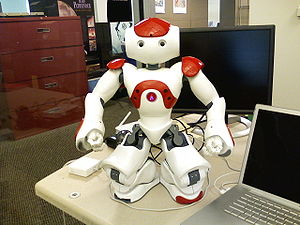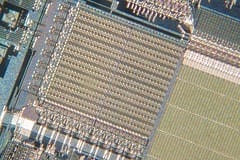Automaton, Know Thyself
Droids met the challenge of perceiving their self-image and reflecting on their own thoughts as part an effort to develop robots that are more adaptable in unpredictable situations.
Robots might one day trace the origin of their consciousness to recent experiments aimed at instilling them with the ability to reflect on their own thinking.
Although granting machines self-awareness might seem more like the stuff of science fiction than science, there are solid practical reasons for doing so, explains roboticist Hod Lipson at Cornell University’s Computational Synthesis Laboratory.
“The greatest challenge for robots today is figuring out how to adapt to new situations,” he says. “There are millions of robots out there, mostly in factories, and if everything is in the right place at the right time for them, they are superhuman in their precision, in their power, in their speed, in their ability to work repetitively 24/7 in hazardous environments—but if a bolt falls out of place, game over.”
This lack of adaptability “is the reason we don’t have many robots in the home, which is much more unstructured than the factory,” Lipson adds. “The key is for robots to create a model of themselves to figure out what is working and not working in order to adapt.”
So, Lipson and his colleagues developed a robot shaped like a four-legged starfishwhose brain, or controller, developed a model of what its body was like. The researchers started the droid off with an idea of what motors and other parts it had, but not how they were arranged, and gave it a directive to move. By trial and error, receiving feedback from its sensors with each motion, the machine used repeated simulations to figure out how its body was put together and evolved an ungainly but effective form of movement all on its own. Then “we removed a leg,” and over time the robot’s self-image changed and learned how to move without it, Lipson says.
Now, instead of having robots modeling their own bodies Lipson and Juan Zagal, now at the University of Chile in Santiago , have developed ones that essentially reflect on their own thoughts. They achieve such thinking about thinking, or metacognition, by placing two minds in one bot. One controller was rewarded for chasing dots of blue light moving in random circular patterns and avoiding red dots as if they were poison, whereas a second controller modeled how the first behaved and whether it was successful or not.
So why might two brains be better than one? The researchers changed the rules so that chasing red dots and avoiding blue dots were rewarded instead. By reflecting on the first controller’s actions, the second one could make changes to adapt to failures—for instance, it filtered sensory data to make red dots seem blue and blue dots seem red, Lipson says. In this way the robot could adapt after just four to 10 physical experiments instead of the thousands it would take using traditional evolutionary robotic techniques.










